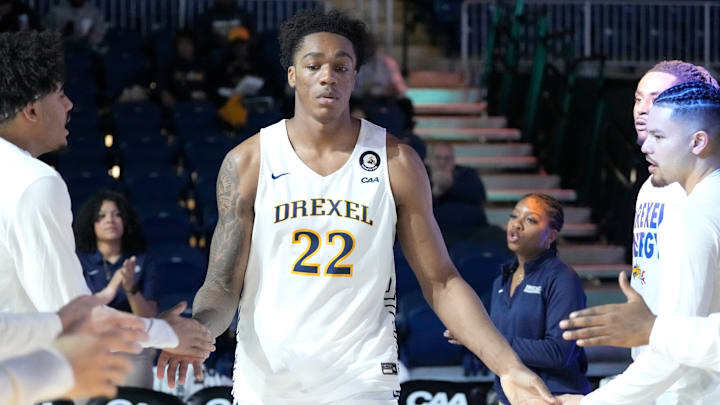The transfer portal has reshaped college basketball, but not everyone is thrilled with how it operates. As top programs continue to poach players from mid-majors and smaller schools, coaches and analysts are pushing for a major rule change: financial compensation for the programs that develop these players in the first place.
With NIL deals becoming the driving force in recruiting, some argue that the portal is no longer about finding the right fit—it’s about chasing the biggest paycheck. And that has sparked serious discussions about the need for stability, fairness, and a system that benefits all programs, not just the wealthiest.
Should Smaller Schools Be Compensated?
Grambling State head coach Mickey Joseph has been vocal about the issue, arguing that if a player transfers to a Group of 5 or Power 4 (P4) program, the smaller school that developed them deserves compensation.
“There needs to be a buyout,” Joseph said. “If they move up from me and go G5 or P4, I should get compensated for that.”
From a coaching perspective, the frustration is understandable. A mid-major program invests time and resources into developing a player, only for them to leave the moment a bigger program calls. Some schools have lost their best players year after year, creating an environment where rebuilding never stops.
The current system rewards the wealthiest programs while leaving smaller schools with little to show for their player development. A buyout system, similar to what we see in professional sports, could help level the playing field.
The NIL Factor: A $10 Million Price Tag?
The NIL era has fundamentally changed recruiting. According to NIL lawyer Darren Heitner, schools will need an NIL budget of at least $10 million to stay competitive for the 2025-26 season. That figure is eye-opening, especially for programs that don’t have deep-pocketed boosters or corporate-backed collectives.
While Name, Image, and Likeness deals were meant to allow players to profit off their personal brand, some argue that it has become nothing more than pay-for-play in disguise. ESPN analyst Jimmy Dykes has been one of the most outspoken critics.
“It’s straight up pay for play, and it’s not NIL,” Dykes said. “Players need contracts.”
This is where the conversation gets even more complicated. Do players become employees, contractors, or create a union? How does it work for smaller programs and bigger programs? If players are essentially being paid to play, should they be required to sign multi-year contracts with schools, like pro athletes?
If you look to other sports, there are sell-on clauses in soccer. If a great player is sold to a bigger team, but then gets even better and gets sold for even more money; the first team he played for is able to recover a portion of the selling fee. This is about as close as you can find, and may end up being the model basketball adopts to find stability.
Fans Want Stability—But What About Players?
Many fans have voiced concerns that the transfer portal and NIL have stripped away the magic of college basketball. If things continue on their current trajectory, will we see a Final Four filled with No. 1 seeds every year? March Madness won't be the same.
One potential solution gaining traction is a three-year contract model where players commit to a school for at least three years, receiving financial support over time. This would give programs stability while ensuring players still benefit from NIL deals.
A program like Kentucky would thrive under this system. Mark Pope has already built a reputation as a strong developer of talent, and a structured, long-term commitment from players would allow the Wildcats to build deep, experienced rosters rather than constantly rebuilding through the portal.
But would this benefit the players as much as the schools? That’s the real debate.
While a contract system could provide stability, it would also limit a player’s freedom. Right now, if a player doesn’t like their situation, they can transfer and find a better opportunity. Would a rigid contract structure take away that flexibility? The same flexibility that coaches use.
Is NIL Ruining College Basketball?
The transfer portal debate isn’t going away, and as NIL money continues to rise, expect more calls for reform. Whether it’s buyouts for smaller schools, player contracts, or new transfer restrictions, the sport is at a crossroads; that much is clear.
And while today’s discussion focuses on the impact of the portal, there’s an even bigger question looming: Is NIL ruining college sports? That’s a story for another day.
Final Thoughts
The transfer portal has transformed college basketball, but not everyone is benefiting. Coaches and analysts are pushing for a rule change that would compensate smaller schools when they lose top talent to bigger programs. Meanwhile, NIL deals have blurred the line between amateur and professional sports, leaving many wondering if a contract-based system is the future.
Kentucky and other blue blood programs would stand to gain from more roster stability, but the real question remains: Should college athletes be locked into long-term deals, or should they retain the freedom to transfer at will?
No matter where you stand, one thing is clear—college basketball’s transfer portal isn’t slowing down anytime soon.
